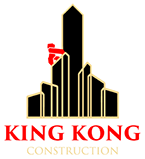
SCALE MODELS
Scale Models
Beautiful scale models made by our architects & craftsmen
with sustainable biodegradable materials.

Today, digital visualizations sometimes look better than reality, but nothing beats a beautifully hand-crafted scale model. It’s one of those irrational effects of presenting a tangible thing that can be explored with multiple senses – a precious experience these days. A model does not strive to represent reality or to surpass it, creating some fictional, idealized version of a building that will never happen. Instead, it creates its own logic where things are simplified but faithful. Based on suspension of disbelief and tactile experiences, it depicts a small, magical place ripe with possibilities. A place where not everything is already determined and polished to the smallest detail. A good scale model sparks the imagination.

What is an architectural model used for?
The architectural model serves many functions, which can be broken down into three categories.
- The first type of model is the conceptual model. This is used at the initial stage of design to look at forms and shape.
- The second is the use of the architectural model to inform and develop a design, the working model. This type of model is not seen by a client or the public but used to develop ideas and work on solutions.
- The third type of model is the presentation model, that is used to present the architects design ideas to the client or public.


Structure
300mm x 300mm columns support in a 6000mm x 6000mm grid. Two cores integrating fire exit staircases, elevators, MEP rooms, and garbage shoots are placed in each building block.
Project Elements
Circulation
In addition to the traditional cores that provide vertical circulation within the building blocks, the ramps create multi-directional circulation patterns around the project that are dynamic in experience.
Over 10 years of experience in
building state of the art scale models


Conceptual Model
The conceptual model allows the designer to develop initial concepts and ideas using basic models and shapes to develop a form. It is an early approach to the design, describing an idea in simple terms. Although sketching is often used as a starting point for development, the physical model allows us to explore our ideas in 3D form. The materials used for this type of model tend to be more basic, and a looser approach is taken to the construction process. They are usually made quickly, and easy to adjust and tweak as the design is progressed.



<
>



<
>
Working Model
Working models go a step further in developing design ideas and solutions. The working model will have higher quality materials that reflect specification in design They help us understand and communicate scale, form and materials. The physical model has a presence, and texture that is difficult to represent in drawings or digital work, and allows for exploration of its materiality and form. At this stage it is possible that the client will be able to see these early models and they will be used as a communication device for the early design.
Presentation Model
The presentation model are far more detailed than the previous models, and reflect the proposed materials of the scheme. The context of the site and surroundings are often included in presentation models to demonstrate how the design fits with the context of the surrounding architecture and landscape. In some cases the presentation model is illuminated, which creates an impressive effect and are often used to highlight particular areas of a scheme. The illuminated model is particularly popular for demonstrating schemes that will be predominantly used at night time (restaurants, theatres, bars etc). The presentation model has numerous functions.
Sales and Marketing
Architectural models can be used as a method of marketing developments. It is quite common to see a scale model of a new housing development, or mixed used development in the sales and marketing area while the project is under construction. This allows potential purchasers to imagine the project as a completed development.


<
>


<
>
Public information
Sometimes architectural models are used to provide information to the public. These could be a 3d map that allows visitors to navigate more easily, perhaps a site map with buildings that displays historical information. It could also be providing the public with a visual sense of an urban planning development that is under progress.


<
>
Planning
For larger developments architectural models are sometimes used to demonstrate the scheme in order to win planning approval, or win the confidence of the public. It allows people to understand the project better than looking at 2D drawings, particularly when under public consultation, as often people find it far more difficult to read plans and elevations than they do a physical model.

Sustainable Materials
More than 90% of the materials we use in our
scale models are 100% sustainable and
biodegradable. Contribute to a safer
environment.





























